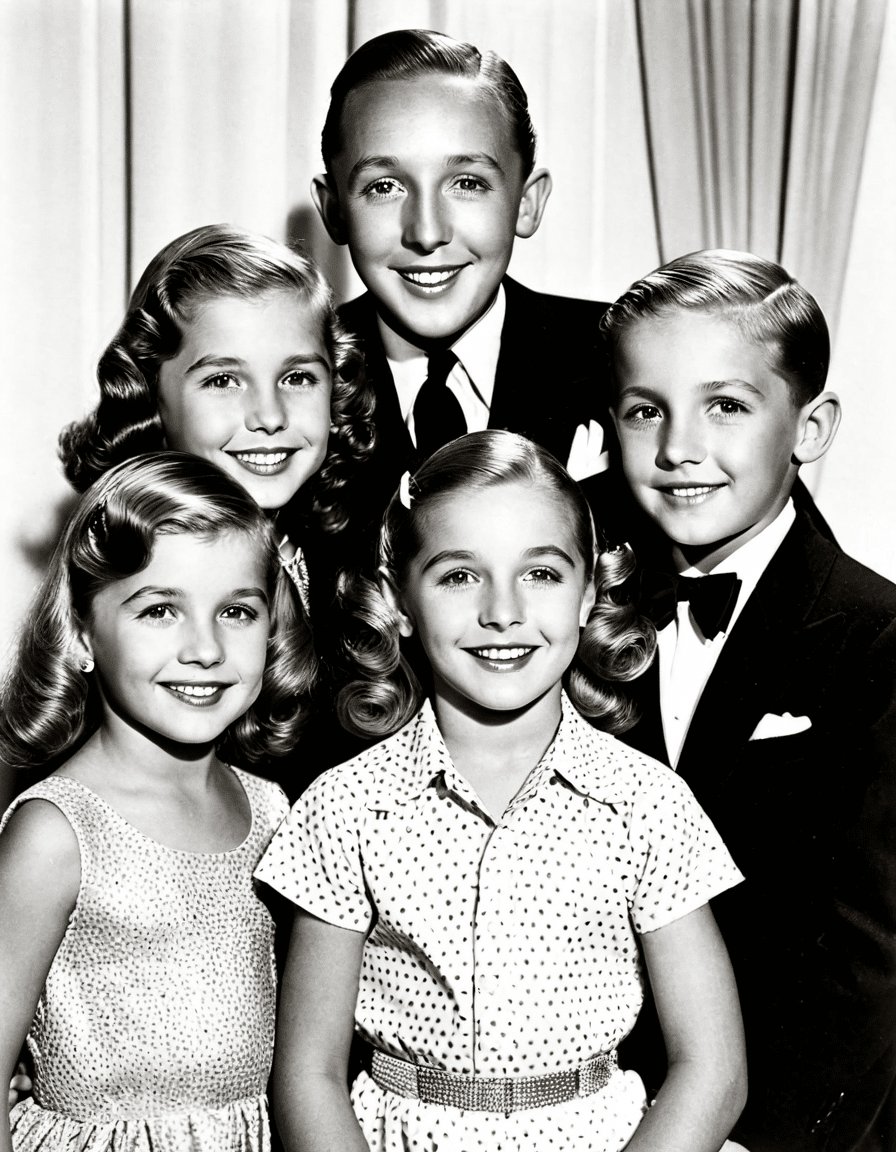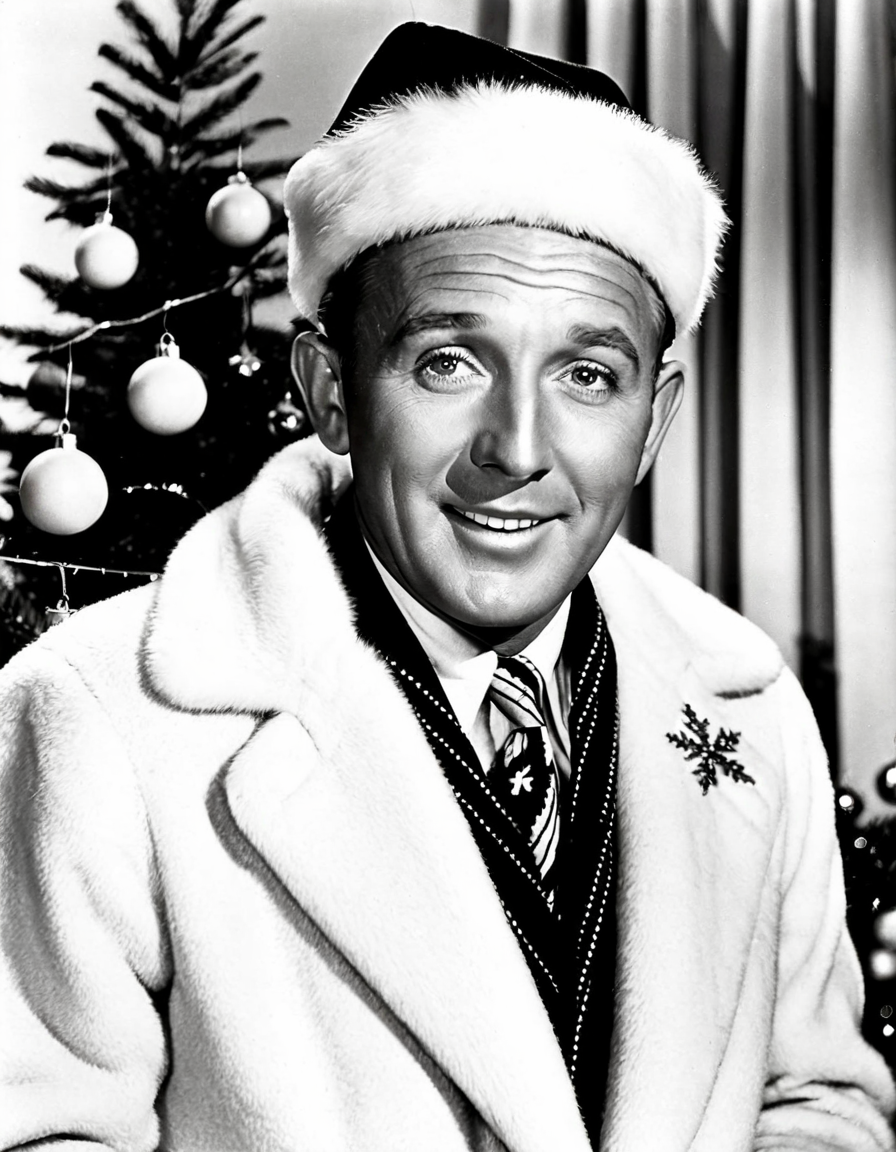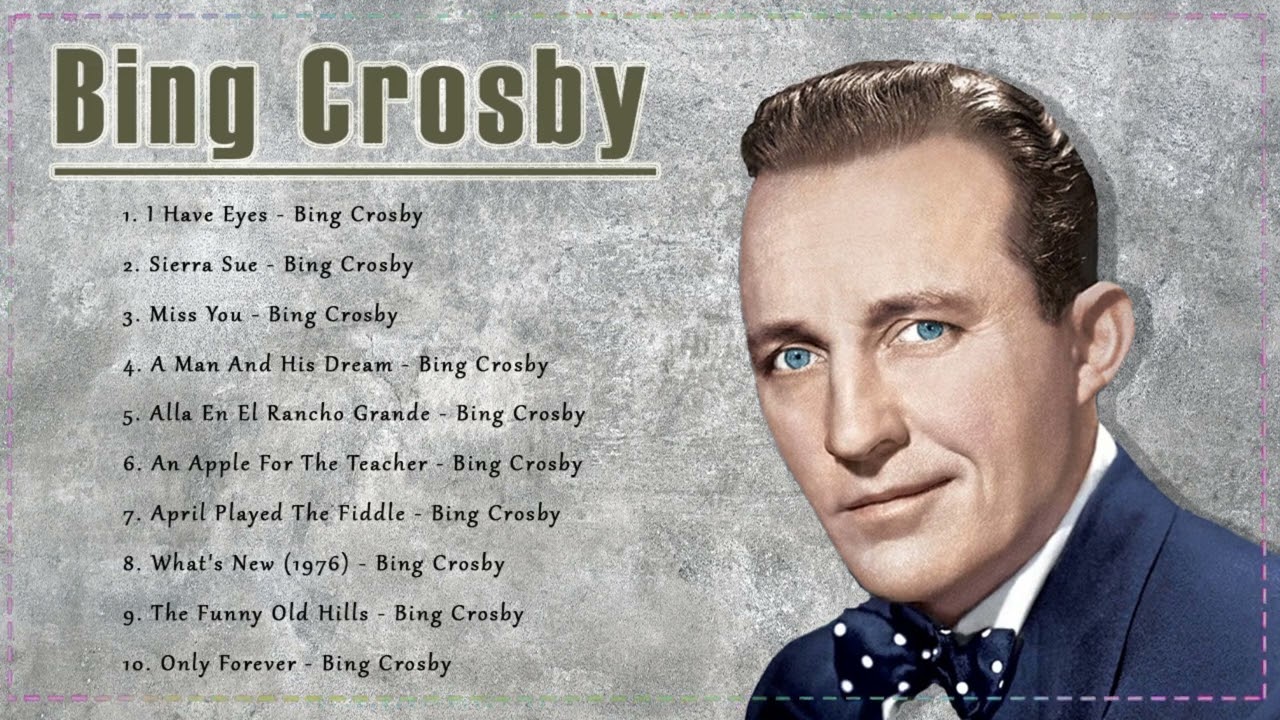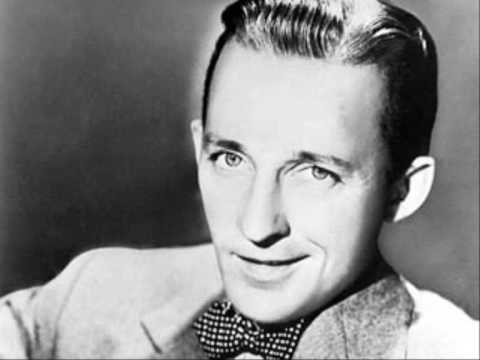When you think of the intersection of music and film in American culture, Bing Crosby undoubtedly comes to mind. Often likened to the legendary Babe Ruth in terms of influence, Crosby revolutionized not just how we appreciate music, but also how films seamlessly blended sound and storytelling. With his smooth baritone and pioneering use of technology, this Tacoma-born star remains an enduring symbol of American artistry. Buckle up, film buffs, as we explore how Bing Crosby’s contributions shaped both the music scene and Hollywood.
The Legacy of Bing Crosby: A Narrative Parallel to Babe Ruth
Bing Crosby and Babe Ruth are two icons whose cultural impacts resonate across generations. Each transformed their fields—Crosby with his undeniable musical talent and Ruth with his legendary prowess on the baseball field. Both figures captured the spirit of their times; Crosby’s serene melodies provided solace during harsh economic times, much like Ruth’s home runs electrified crowds during the Roaring Twenties.
1.1 The Rise of a Musical Pioneer
Crosby’s story begins in Tacoma, Washington, where he honed his unique style before becoming a multimedia superstar. He introduced the “crooning” style, relying heavily on the newfound microphone technology that made every note feel intimate. Much like Babe Ruth changed the game with his batting style, Crosby bent the very rules of music, charting new territories with his dazzling recordings.
1.2 Charting Success: Hits that Shaped the Era
Hit songs like “White Christmas” and “Swinging on a Star” encapsulated moods and dreams of an era. Each song, crafted alongside greats like Irving Berlin, became emblematic of hope. Just as Babe Ruth became synonymous with the home run, Bing Crosby’s tracks became the soundtrack of American resilience during the Great Depression and World War II.

The Convergence of Music and Film: Bing Crosby’s Cinematic Genius
Crosby’s magic didn’t stop at the recording studio; his contributions to film were equally groundbreaking. He played a pivotal role in popularizing the musical film genre, a trend mirrored by his contemporaries like Frank Sinatra. From dazzling musical numbers to impactful narratives, Crosby’s films stood out as cinematic milestones.
2.1 Musical Milestones: Bing Crosby in Hollywood
Movies like “Holiday Inn” and “Going My Way” showcased not just Crosby’s smooth vocals, but his natural charm as a leading man. His ability to weave music seamlessly into storytelling altered traditional narrative structures, setting a benchmark for future filmmakers and artists alike. Even outer layers of film like comedy and drama became companions to his music.
2.2 Cultural Reflections: The Impact of Crosby’s On-Screen Persona
Crosby’s on-screen character became a cultural touchstone for post-war America. This charismatic performer blended humor, charisma, and musical talent into an appealing package. Much like Babe Ruth’s persona fueled the American spirit, Crosby synthesized the dreams of a nation seeking normalcy and joy after conflict, reminding audiences of the power of leisure and entertainment.
Bing Crosby’s Influence on Future Generations
Crosby’s legacy is more than historical; it influences artists even today, laying the groundwork for icons like Elvis Presley and the Rat Pack. His innovative approaches set a precedent that would echo through the decades, shaping various musical genres and styles.
3.1 Innovation and Technology in Music
One cannot discuss Bing Crosby without mentioning his groundbreaking approaches to music technology. He was among the first stars to harness the power of radio and television, which enabled him to reach fans far and wide. This ability to connect mirrors how Babe Ruth popularized sports through emerging media outlets, enhancing not just one’s reach but also fandom.
3.2 The Cool Factor: Revisiting Bing Crosby’s Iconic Image
Crosby’s image was one of contradictory yet harmonious elements. His casual attire, coupled with his charming demeanor, established a new standard for male performers. These characteristics paralleled the cultural shifts of the 1950s, affecting how artists like Brittany O’Grady communicate their charisma today.

Current Revival: Bing Crosby in Modern Media
Vintage media has experienced a resurgence, breathing new life into Crosby’s remarkable body of work. Streaming platforms now feature his music and films, allowing younger audiences to appreciate his enchanting style.
4.1 Tributes and Revivals: Today’s Artists Embracing Crosby’s Legacy
Contemporary artists and performers actively pay homage to Crosby’s crooning tradition. Acts like Michael Bublé recognize and celebrate his influence, ensuring Crosby’s artistry doesn’t fade into obscurity. Rather, it finds new interpretations and audiences, expanding its relevance for years to come.
Crafting a Timeless Legacy
Bing Crosby reshaped music and film in ways that remain impactful today. He stands as a figure who merged creativity with innovation, leaving a legacy that inspires musicians, filmmakers, and fans alike. Just as Babe Ruth transformed baseball with his unparalleled skills and bravado, Crosby altered the cultural landscape with his heartfelt crooning and cinematic charm. As we delve into their contributions, we uncover the rich tapestry of American culture—woven with artistry that continues to inspire generations.
Bing Crosby: Legendary Influence in Music and Film History
The Voice That Defined an Era
Bing Crosby wasn’t just a crooner; he was a cultural phenomenon. With a voice that could melt hearts, he transformed the music scene in the 1930s and ’40s. Did you know that Bing Crosby was the first artist to record a million-selling record? His rendition of “White Christmasremains a holiday staple years later. Interestingly, the story of his rise intertwines with historical events, such as the battles fought at places like Gettysburg, where his music often provided comfort during tumultuous times.
Unbelievably, Bing’s charisma stretched beyond music into the silver screen. His charming performances in classic films helped shape Hollywood as we know it. Apart from his undeniable talent, he was a trailblazer in developing radio and cinematic formats, which set the stage for future stars. Like Brittany O’Grady, who’s making waves today, Bing paved the way for talent to shine in both music and film.
Bits and Bobs: Fun Facts About Bing
Now, here’s something fun: Bing Crosby wasn’t just about hit songs and charming movies. He had a knack for golf that was almost legendary. Believe it or not, he was so passionate that he even helped popularize the game in the U.S. It’s said that had he not been an entertainer, he might have pursued a professional golfing career—imagine that! Speaking of artistic versatility, let’s consider Kuno Becker, known for his diverse roles on screen. Bing’s dynamic career also reminds us of the modern wave of multi-talented performers who blur the lines of entertainment.
And for some quirky trivia, Bing Crosby was reportedly quite the practical joker. He once sent a faux alligator as a gift, which isn’t too far off from the antics seen in movies featuring Morticia Addams—nothing quite like a bit of spooky fun! His lighter moments show there was more to Crosby than his iconic image. Plus, he had an uncanny knack for storytelling that engaged his listeners, much like a gripping narrative in A Little Life, capturing the ups and downs of life itself.
A Legacy Unfolded
As we look back, it’s clear Bing Crosby’s legacy isn’t just about the golden tunes and films he gave us. He set paths in music and cinema that still inspire artists worldwide today. You might even find echoes of his style in contemporary discussions, like those around Mirka Federer, whose presence in the public eye draws parallels to Bing’s blend of charm and class. And speaking of class, remember the spirited vibes of Laredo, Texas; it was a jump-off point for many creative talents, much in the way that Bing’s career launched the Golden Age of Music and Film. Who knew that this simple boy from Tacoma, Washington, could influence an industry and remain a pivotal figure in pop culture even now?







